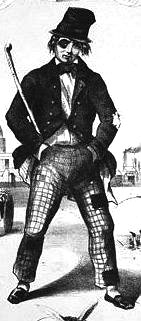Venue Type & Location
Overview
Address: 92 Geneva St. (pp.47)
Vernon's City of St. Catharines Street, Alphabetical Business and Miscellaneous Directory for the Year 1916. Henry Vernon & Son, 1916. ia801601.us.archive.org/24/items/vernstcatharines00vernuoft/vernstcatharines00vernuoft.pdf
People of African descent began settling in the St. Catharines, Ontario area around 1788 and they brought their religion with them. Many were followers of Rev. John Wesley, the founder of Methodism and a staunch abolitionist. They also followed Bishop Richard Allen, the founder of the African Methodist Episcopal Church (AMEC).
An AMEC Society was established in the Queenston Street area in St. Catharines between 1814 & 1820 and a small chapel was built to serve the faithful. When construction on the first Welland Canal (1824-1833) began, most of the community relocated to the underdeveloped area of Geneva, Welland and North Streets.
The AMEC worshipers purchased land in 1835 on North Street from abolitionist businessmen, William Hamilton Merritt and Oliver Phelps to build specifically an "African Methodist Episcopal Church." This church would be the second in St. Catharines and it would house about 70 people. It was located in the center of the African Canadian community that was known as the “Colored Village”.
In 1837, the St. Catharines group sent a petition to the AMEC Conference in the US asking for pastoral care. As a result of this action, AMEC missionaries stationed in Upper Canada were instructed to regulate the existing Societies, organize more in other regions and also communicate that "… they shall be subject to the order of the Bishops, and amendable to the Annual Conference of the New York District." The following year, the New York AMEC Conference organized a church in St. Catharines with forty members and two local preachers. The church was named Bethel Chapel.
After the US Congress passed the 1850 Fugitive Slave Act many free and escaped African Americans relocated to various parts of Canada West. With so many fugitive slaves arriving by way of the UGRR it became necessary to build a larger AME Church in St. Catharines. As a Methodist meeting house, the church provided aid, assisted with temporary shelter for the newly arrived African Americans and hosted many anti-slavery lectures.
The third and current church was also built by African American freedom seekers. The construction began in October 1853 and AMEC Bishop Daniel Payne publicly dedicated the new church to the service of Almighty God on November 4, 1855.
"Welcome to the Salem Chapel Sanctuary of History" Salem Chapel BME Church Harriet Tubman Underground Railroad NHS Canada. Salem Chapel, 2016. salemchapelbmechurch.ca/index.html

